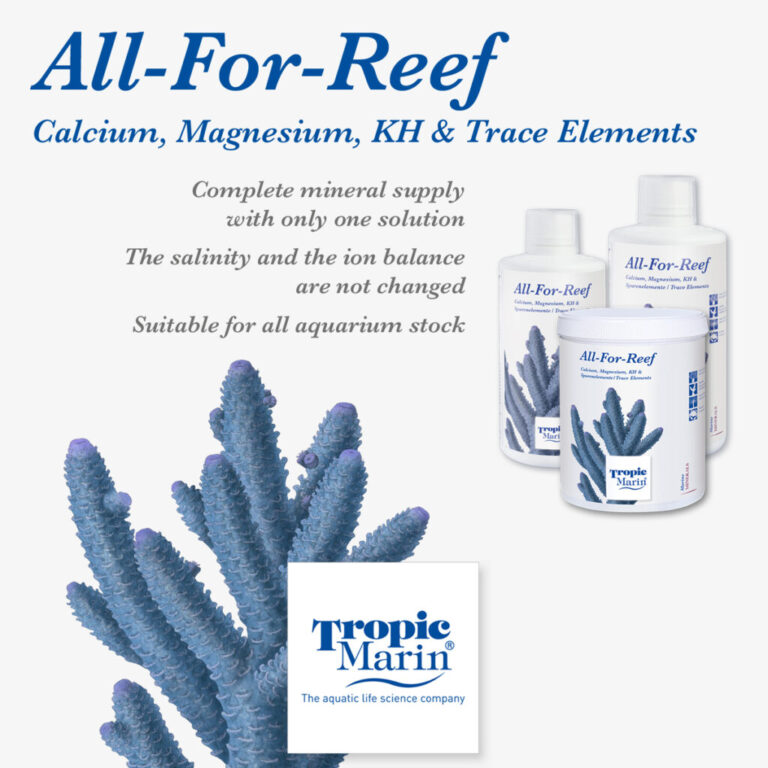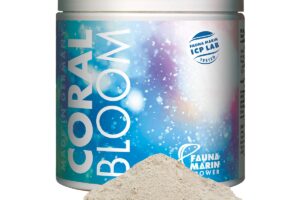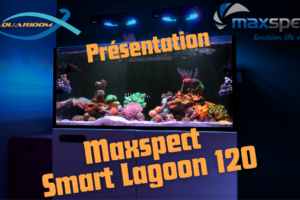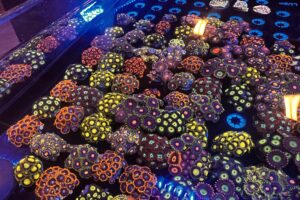Reefkeeping Basics : Supplementation for corals
In our hobby, « supplementing » is a whole concept. It can be totally destabilizing for beginners. What is dosing and how to set it up? Here are some answers.
Article sponsored by
What is dosing?
Reef tanks can be considered as closed systems (except from some ponctual outputs like water changes and skimming for example). Animals we keep in have feeding and chemical needs we need to fulfil.
Corals rely mostly on dissolved chemical compounds in seawater to create their soft tissue and skeleton but also the molecules that their symbiotic algae produce.
We must keep the concentration of all the elements the corals need in some given intervals to ensure their health, growth and coloration, and for this, we add these elements in our tanks. That is what we call “supplementation”.
There are several methods to do so, more or less complicated, and we need to choose according to the animals we keep, the time and the money we want to imply in the hobby. It is very important to choose the method we can keep under control rather than a method we are overwhelmed with.
Which elements to supplement?
Whereas we used to keep under control only major elements years/decades ago, techniques and knowledges improvements allow to go far further into water chemistry and supplementation.
Major elements to keep under control anyway are calcium, carbonates (alkalinity) and magnesium. The second step can be the supplementation of kalium and iodine. They are involved in corals health and coloration.
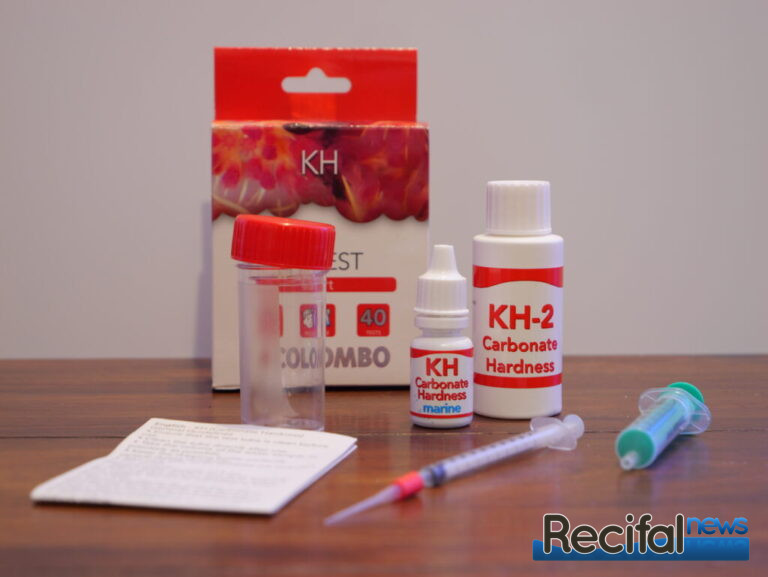
Some elements are easy to test and control.
The final step in supplementing and water chemistry gestion is to do ICP tests and supplementing each individual element they measure.
ICP tests are laboratory-quality tests. You ship a water sample to a dedicated laboratory which gives you the concentration of dozens of elements. By doing it regularly, you can supplement each of them or the ones you are interested in keeping under control. ICP tests allow a fine and targeted supplementation.
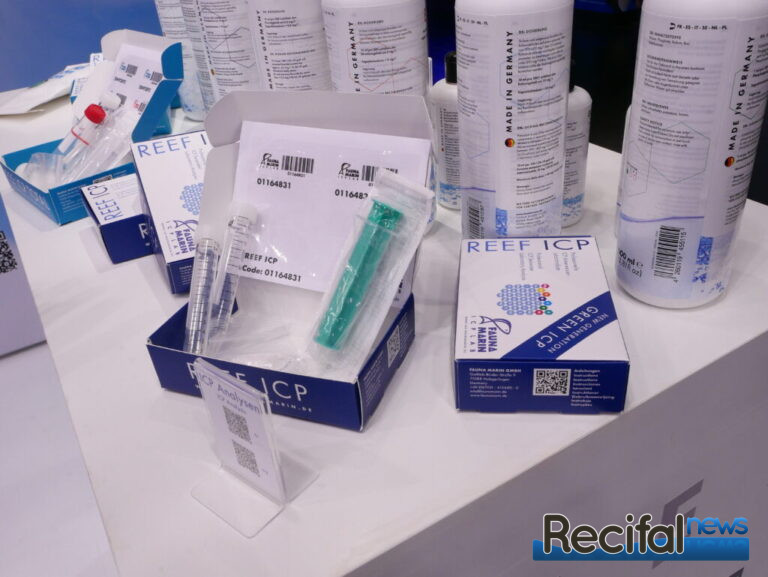
ICP tests allow fine and detailed water quality analysis and control.
The methods
Partial water changes
It is not necessary a supplementation solution by itself, but changing regularly some water from your tank with freshly prepared seawater brings new minerals to your tank.
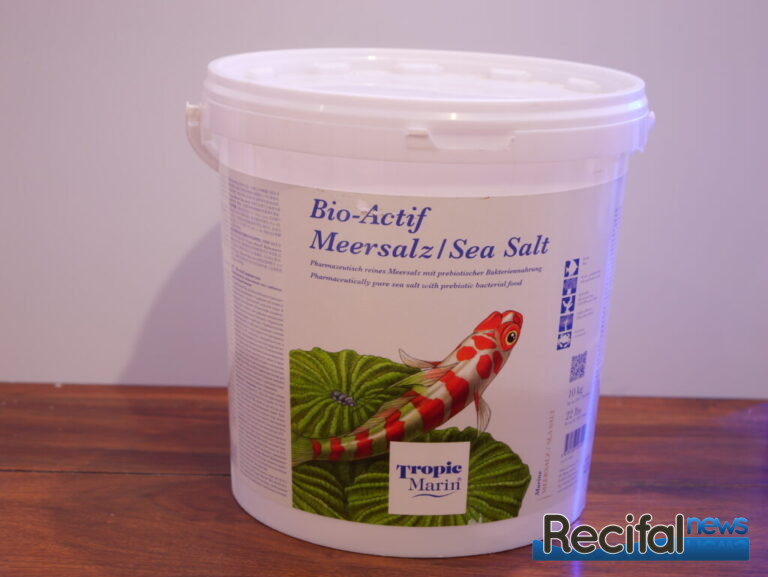
Changing water brings elements from freshly prepared seawater with elements contained in the sea salt mix you use.
This can be enough for low corals density tanks, or soft corals tanks.
If you do bigger and more frequent water changes, the changes in elements concentration will be less important. But don’t overdo to keep a certain stability.
Manual dosing
To bring the elements in our tanks, we find them in liquid solutions or powder to dissolve. Thanks to regular testing and by doing some calculations (see below in this article an example), you can adjust the daily dose you need to keep the different concentrations stable.

Dosing manually is easy but compelling.
Manual dosing is cheap, but compelling. You can do it on small tanks and mostly for major elements like calcium, KH/alkalinity and magnesium for example. Other elements can be provided by regular water changes (every 2-4 weeks for example).
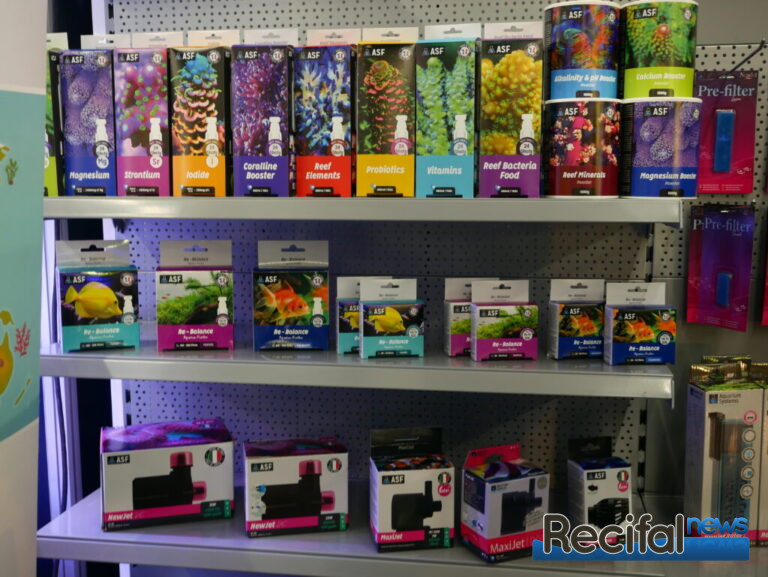
Some brands provide unidose format to make it easier.
Automated dosing
- Calcium Reactor
It is one of the first automation system created in our hobby. This reactor consists in a chamber filled by a calcareous media. A CO2 injection in this chamber lowers the pH of the water meaning that it becomes more acidic. This leads to media dissolution. The minerals it is made of are released in the water in the reactor that goes back to the tank.

You can tune 2 parameters to maintain minerals concentration (mostly calcium and KH/alkalinity):
- pH injection, accelerating or slowing the media dissolution
- Flow going from the reactor to the tank to adjust the minerals increase
According to the source, the type and the quality of the media, it contains several minerals that are also brought to your tank. The best solution to know exactly what in which proportion is to do an ICP test of water at the output of the reactor for example.
- Dosing pumps
Coming from medical field, dosing pumps are now common in our hobby. These small pumps allow a precise, programmable and almost limitless dosing solution.

4 ways/heads dosing pump
Their use is easy:
- Choose/prepare the solutions you want to add to your tank and place them in bottles or closed containers under / next to the dosing pump
- Put the suction tubing from the pump in them
- Place the output tubing over your tank or your sump (ideally a spot with good water movement)
- Create your daily dosing schedule.
You can find dosing pumps with 1 to 6 heads generally. And there are also some single head models you can plug in chain and make them work together.

One head and an « all in one » sulotion make it easy!
To simplify this kind of dosing, some biologists and hobbyists developed solutions. They found that corals usually consume elements in stable proportions.
Dr. Hans Werner Balling is known for his famous dosing method. It consists in 3 solutions to maintain major elements :
– Calcium solution (calcium chloride)
– Carbonates solution for KH/Alkalinity (sodium hydrogen carbonate)
– A mix of dissolved minerals as found in natural sea water to keep the good ionic balance and density. It is called “salt without salt” solution as it contains minerals in powder but NO “salt” as sodium chloride. This solution contains magnesium, but you can add it separately if you see that its concentration drops in your tank.
This Balling method has been improved by adding trace elements as we now have better testing solutions and knowledges on their consumptions by corals:
- Strontium and barium in calcium solution
- Manganese, cobalt, copper, zinc, nickel, iron, potassium and chromium in the second solution
- Iodine, fluor and boron in third solution.

« Improved » Balling kit ready to mix
There are also some “all-in-one” solutions that are based on relative consumption of all elements by corals. The dosing calculation is generally based on KH or calcium testing.
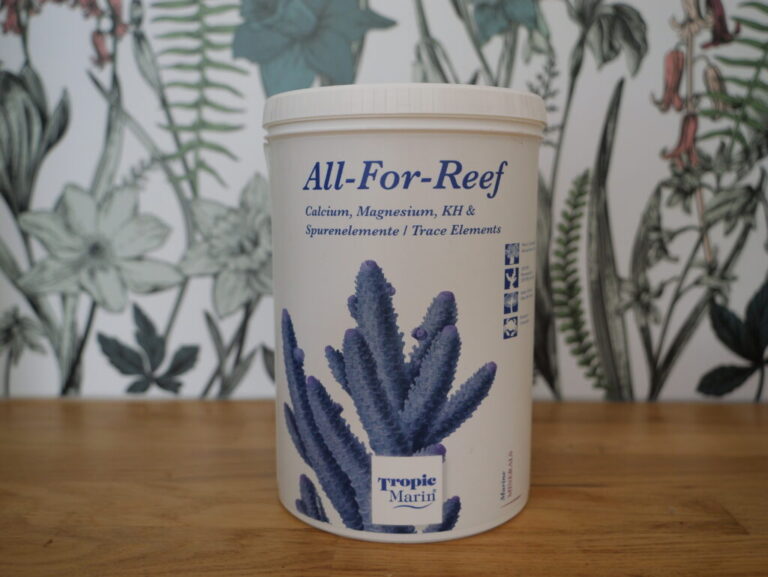
All-in-one solution is an easy dosing way.
Their use can lead to some intermittent higher or lower values in some elements that are also used by other animals in your tank. Testing is always necessary when it is a matter of dosing anyways!
Experts can also prepare their own solutions, but it requires some chemistry and mathematical knowledges and precise weighing scale. Indeed, some elements like calcium can be found in different chemical molecules that don’t impact the same way the general water chemistry. It also implies to find a reliable chemistry raw products supplier.
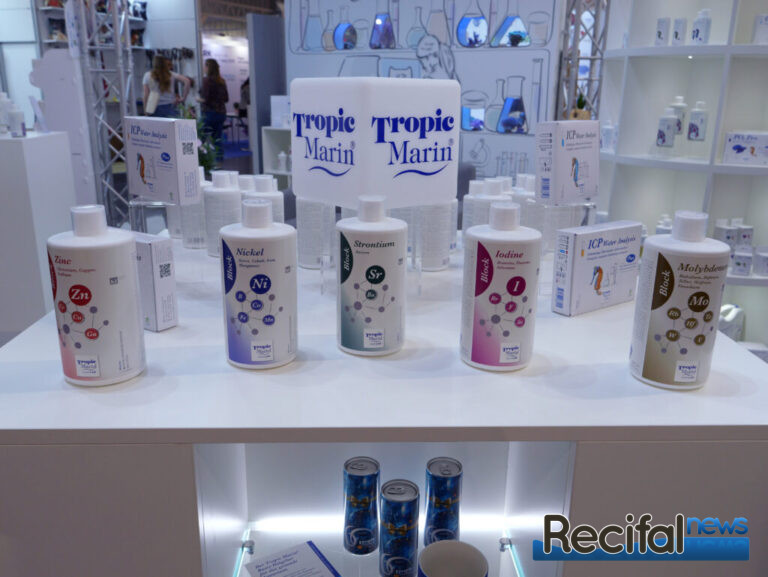
Nowadays, we find single element solutions to precisely dose what your tank needs.
By using dosing solutions, always refer to instructions and start with initial recommended dose. Testing and adjusting every 3 days or every week are necessary but once stability is maintained, you will have to do it less frequently.

Some brands have a precise automated calculation system according to your ICP tests results.
- DyMiCo System
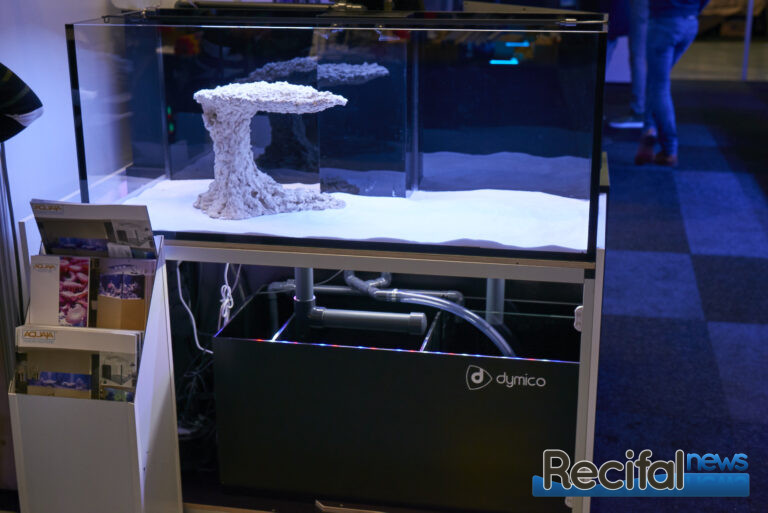
A DyMiCo system takes the place of the sump.
This system is a mix between biological filter and calcium reactor. A DyMico System replace the sump. Water coming from the main tank flows slowly through a deep sand bed where bacteria and critters consume organic matter. Underneath this sand layer, calcareous media is placed. Like in a calcium reactor, you can adjust CO2 injection to speed up or slow down its dissolution. An integrated computer with specific program drives CO2 solenoid valve, probes and pumps to optimize its efficiency.
Baseline principle and calculations for liquid solution dosing
Whatever the supplementing solution you choose, the principle stays the same. Here is a simple example:
1/ Doing the initial test: by using any testing solution (drop test kits, photometer or ICP test), you have to know the initial concentration of the element you want to supplement.
Ex: at T0, Calcium = 430 mg/L
2/ Doing the same test a few days later: to know how much your animals consumed in a given time period, you must do the same test a few days later.
Ex: on 3rd day, calcium = 400 mg/L
3/ Daily consumption calculation: knowing the initial concentration, a concentration after some days and the time period between both tests, you can calculate the daily consumption:
(initial concentration – final concentration) / number of days between both tests
Ex: (430-400)/3 = 10 mg/L/day
Your daily dosing solution has to bring these 10 mg/L of calcium to your tank.
With a calcium Reactor or Dymico System, you have to adjust CO2 injection and flows to maintain the concentration.
With a liquid solution, you can refer to the instructions on the product you use. There is generally an information like “1 mL of this product increases the concentration by X mg/L of 100L of your tank”.
Ex:
Total system volume (tank+sump): 350L
Supplementation: 1 mL increases the calcium concentration by 5 mg/L of 100L of your tank
Calculated tank consumption: 10 mg/L/day
1st step: How much product do I need to compensate the daily consumption for 100L?
For this, you divide the indicated concentration increase in the instructions by the consumption.
Here: 10/5 = 2 mL
2nd step: How much product do I need for the whole volume of my tank?
Multiply the previous results by (the volume of your tank divided by 100).
Here: 2 mL * (350/100) = 7 mL
If you add 7 mL daily to your tank, the concentration will stay at the value you have on the first day of dosing.
Note: If the instructions give the increase on any other volume than 100L, change 100 by the volume indicated for the dosing calculation.
Supplementation for reef tank in a nutshell
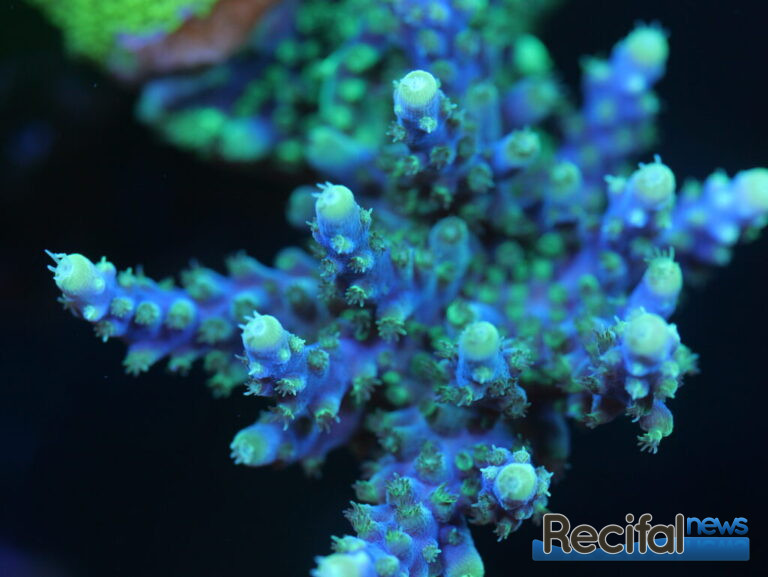
Supplementation means adding minerals and trace elements to compensate their consumption in your tank.
Partial water changes bring these elements in proportion of the volume you change. It can do the work in small and low corals density tanks. The only way you can adjust their impact is to modify their volume and frequency.
Calcium reactor automatizes mainly the concentration of calcium and carbonates. Trace and minor elements dosing or partial water changes can be necessary to keep more sensitive hard corals. You can adjust the quantity of minerals the reactor releases by tuning the CO2 injection and the outflow of the reactor.
Dosing elements individually or in mixed solutions with dosing pump is the more precise way, especially with regular ICP Tests. You can create very specific dosing schedules to follow your tanks inertia and needs. By using all-in-one solution, you reduce supplementation at its easiest form.
DyMiCo system is interesting by its dual approach between nutrients management and minerals release. As for calcium reactor, some elements can be exhausted if not dosed separately according to ICP tests.
Whatever supplementation solution you choose, the essential part is to maintain elements concentrations into good intervals values. You have to test any element you choose do add to avoid overdosing.
For simple tanks with soft corals or easy SPS like Montipora, Stylophora, Pocillopora, managing calcium, KH and magnesium can be enough. But easy access to ICP tests and dosing solutions opens the way to a full water chemistry management.

